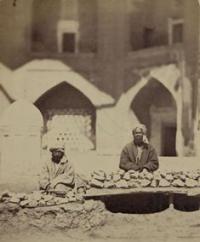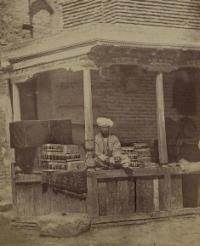Вы здесь
Travelers on Great Silk Road.


Destinations and routes of Great Silk Road
“He who conquers himself is the mightiest warrior”
Confucius.
Great Silk Road Central Asia.
Since ancient times, people traveled, exchanging goods, skills and ideas with neighboring settlements. Throughout history, immense Eurasia was a crossroads of communication routes with trade routes, which gradually contributed to the formation of the Silk Road known today. Here they traded silk as well as other goods with peoples from different parts of the world.
At the same time, sea routes were created that linked the East and the West by water, and were used mainly for the spice trade, which provided the basis for the Spice Route. Numerous road networks served not only for the movement of goods and luxury goods, but also the transfer of knowledge, ideas, cultures and beliefs, which greatly influenced the history and development of civilizations of Eurasian peoples.
Travelers risked being attracted not only by trading activities, but also by participation in intellectual and cultural exchanges in the cities in whose territory the Silk Road passed. Cultures of peoples in the field of art, literature and science were mutually enriched, and there was also an exchange of knowledge about crafts and technologies - all this influenced the formation of languages and religions.
These routes have existed since ancient times, but despite this, the name "Silk Road" is a relatively recent concept. It was proposed by geologist Baron Ferdinand von Richthofen in the middle of the XIX century, who called the communication system and trade Die Seidenstrasse, which means the German Silk Road. This term is also used in the plural, which adds to it even more mysterious.
The first fearless wanderers were Chinese adventurers who risked their lives walking the Silk Road routes. General Zhang Qian became a famous wanderer, who, it is believed, in the II century BC, opened the first route from China. In 139 BC, Emperor Khan Wu Di sent Zhang Qian to the west to form an alliance against the inborn enemies of the Chinese empire, the people of Hunnu, who subsequently captured the general as a prisoner.
Thirteen years later, he managed to escape from captivity and return to China. In 119 BC, rejoicing at such a successful expiration of circumstances, the emperor entrusted Zhang Qian with a new mission: to visit other neighboring tribes. A successful assignment affected the opening of the path for ambassadors and travelers.
Religion was another inspiration for traveling along these paths. Chinese Buddhist monks made pilgrimages to India for the return of sacred texts, the diaries of these monks are the richest sources of information. The Buddhist monk Fasian’s diary (described his journey from 399 to 414 AD) is a significant contribution to the history of Central Asia in the Vth century.
The diary of Xuanzang (25-year-old journal from 629 to 654 AD), “Pilgrimage to the West”, has not only great historical significance, but also inspires like a XVIth-century comic novel, and is also considered a great novel of Chinese classics. People traveled on these routes in two directions. In the Middle Ages, monks and traders from Europe traveled to the East for many reasons.
Worthy among them were Giovanni Plano Carpini, sent by Pope Innocent IV on a journey from 1245 to 1247, a Flemish Franciscan monk sent by Louis IX the Holy 1253 to 1255, and Marco Polo, whose travels lasted more than twenty years, from 1271 to 1292.
In the XIX century, wanderers of a new category appeared: Western archaeologists and geographers, as well as enthusiastic researchers. These travelers came from France, England, Germany, Japan, crossed the Takla Makan desert in western China, not the territory of which the Xinjiang Uygur Autonomous Region is today, then the researchers studied ancient monuments on the Silk Road, making many archaeological and scientific discoveries.
Throughout history, the Silk Roads, routes of dialogue, commerce, interaction and exchanges have united people and their cultures. For the first time created as a network of communication and exchanges, significantly influenced the history of Eurasia: the culture and religion of nations, languages, science, while preserving the intellectual and artistic heritage.
Enlightener:
http://ru.unesco.org/
Photos used
from the Turkestan album of General von Kaufman.







